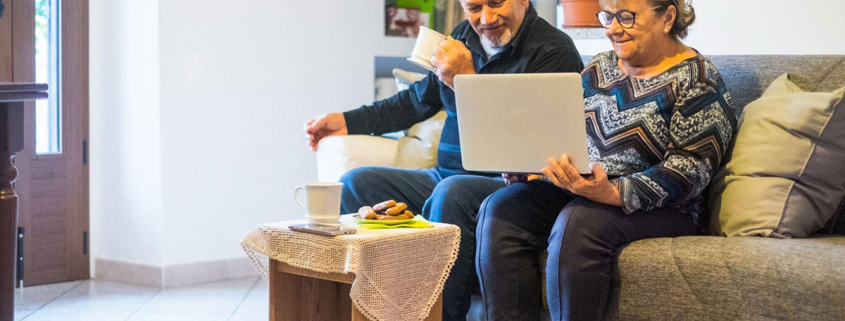9 Tips for Helping Seniors Use Technology
Seniors are just like everyone else in that their technology experience can vary widely. Some may run in terror from an iPhone while others (like Lili Hayes) may have millions of TikTok followers. Regardless, just like everyone else, seniors have much to gain from using the many wonderful technologies available these days. And if they need a little help getting started, here are some tips to help you help them.
1. Know the tech experience of the person you are dealing with. Start by knowing your audience. The easiest way to do this is just to ask them what their technology experience level is. This will help you avoid two problems. First, you might wrongly assume that they have knowledge they do not in fact have. On the other hand, you may insult a tech-savvy senior by dumbing things down.
2. For those with very little technical experience, it’s important to sell them on the benefits of technology use. For example, they may be better able to keep in contact with their family and friends. They may better stave off boredom with engaging online content like video games or crossword puzzles. Bottom line is, they need to know what’s in it for them.
3. Find technologies that are created specifically with their needs in mind. The best ones will have all the benefits of technology use, like keeping in touch with loved ones, while having none of the risks. Technology products that avoid usernames, passwords, addresses and so on are inherently easier to use. And some of them even sidestep problems like phishing scams and malware altogether.
4. Be mindful of any vision, hearing, dexterity or even cognitive limitations. Let’s face it, as we get older our faculties may decline. This will vary from person to person, but it’s something to be aware of. Folks with these issues may not be able to use standard computer interfaces that other people take for granted. It is important to select technologies that fit the person. Screens should be large as opposed to small. Icons should plainly indicate their functions. Features should be easily discoverable rather than relying on a memorized series of steps to use them. Want to place a video call? Touching an icon labeled “Video Calls” and then touching the name and photograph of the person they want to call would make it simple. Consider when you used to have to use a program with an arbitrary name like Skype, launch it, log in with a username and password, then remember and type in the address of the person you wished to call. Nobody should have to do that any more.
5. Personalize it! If you’re introducing technology into a senior’s life, first customize it just for them. It is customary for a technology user to do this themselves, but if you have a tech-averse individual in mind, you might want to do it for them, so that their first experience with a new device isn’t a frustrating one. Program in the names and photos of the people they will want to video call, for example. Use photos of their grandchildren for their screensaver and background. Technology will be much more welcome in a senior’s home if it has the faces of their loved ones on it.
6. Select technologies that are well-supported and have great customer service. iPhones are nice smartphones, but even though you can go into an Apple store to get help, there isn’t an easy customer service line to call and get information and tips. Choose a technology that has onshore support and a call center with real people. Getting problems resolved and questions answered quickly will ease the adoption of new technology.
7. Sometimes seniors are afraid of “messing things up.” Use technology with guard rails when dealing with seniors who aren’t so tech savvy. When introducing these kinds of products, let them know there’s nothing they are going to break. This will encourage them to discover and try new things with their new technology.
8. Hide unwanted features and functionality. A laptop can do nine million things. But if your tech-averse senior only plans to do three things, put those things front-and-center and remove the rest from view.
9. Do it together. Don’t just tell a senior what they can do with their new technology, try it out with them. Show them how to listen to the radio, play solitaire or send a message to a family member. Even if you’re just making a video call from down the hall, it’s a lot easier for people to do things on their own after they’ve tried it out with your help.
10. Bonus tip. If you don’t know how to find senior-friendly technology products, start with GrandCare. GrandCare was specifically designed for the aging population (with another platform designed for individuals with I/DD.) GrandCare makes photo sharing, messaging, video calls, calendar reminders and To Do checklists, news and entertainment more accessible for people with any level of technology experience. It also removes all of the risks of being online.
If you want to know more about GrandCare, chat with us live on our website or contact our call center: (262) 338-6147 sales@grandcare.com.



